I love it when our class starts our Matter Science Unit. The look and amazement in the kid’s eyes as they realize matter is everywhere around us is priceless.
Science always brings out the wonderment in our students as we dive into various units and experiments throughout the year.
We explore light, chemical reaction, and energy with our Glow Stick Science Experiment. And we introduce our little learners to the pH scale with this experiment.
To bring science and literacy together, we create our very own emergent reader for Earth Day.
Our students learn about different animals all year long with our Animal Studies Bundle; there are over 70 science lessons included to keep us busy!
I’ve created another way for students to learn more about science by creating this Matter Science Unit. It’s an excellent way for kids to learn physical science in a hands-on way.
If you are looking to bring more hands-on science into your curriculum, be sure to take a look at our Monthly Science Experiments.
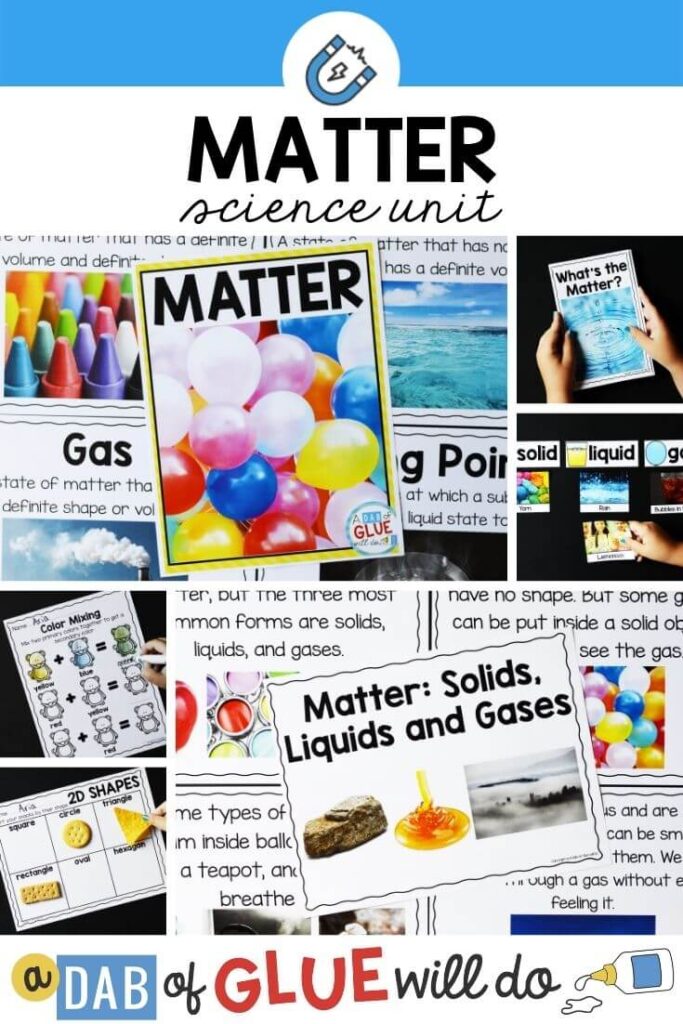
Matter Science Unit
Your class will be engaged as they learn all about matter.
This Matter Science Unit is perfect for science in Preschool, Kindergarten, First Grade, and Second Grade classrooms and is packed full of intriguing science activities.
Students will learn about the states of matter. This pack is great for homeschoolers, kids activities, and to add to your unit studies!
Inside You Will Find:
– Science Lesson Plans for two to three weeks
– Matter Vocabulary Posters – 12 pages
– Properties of Matter Introduction Powerpoint – 19 pages
– Properties of Matter Posters (exact same as PowerPoint above) – 19 pages
– Color Mixing Activity Directions and Worksheet – 3 pages
– Sorting Lengths Directions and Worksheet – 3 pages
– Texture Activity Directions and Texture Mini Book – 5 pages
– 2D and 3D Shapes Snack Activity Directions and Worksheet – 4 pages
– Size Activity Directions and Worksheet – 3 pages
– Temperature Activity Directions and Worksheet – 3 pages
– Measuring Mass Activity Directions and Worksheet – 3 pages
– Capacity Activity Directions and Worksheet – 4 pages
– Liquid Density Experiment and Worksheet – 7 pages
– Buoyancy Experiment Directions and Worksheet – 6 pages
– Matter: Solids, Liquids, and Gases PowerPoint – 21 pages
– Matter: Solids, Liquids, and Gases Posters (exact same as PowerPoint above) – 21 pages
– Becoming Molecules Gross Motor Activity – 3 pages
– Cheerios Molecules Directions and Worksheet – 4 pages
– Pancake Matter Experiment (adding heat to change matter) – 7 pages
– Juicy States of Matter Experiment (adding cold and heat to change matter) – 7 pages
– Balloon Gas Experiment – 6 pages
– Solid, Liquid, and Gas Sort (with real pictures) – 7 pages
– Solid, Liquid, and Gas Worksheet – 1 page
Materials Needed for Matter Science Unit:
- paper or cardstock
- laminating pouches
- laminator
- double-sided tape, adhesive magnetic strips
- materials listed inside the product for each of the matter learning activities
Using the Matter Science Unit:
After you purchase this activity and download it, I recommend that you print the activities out on cardstock and laminate them so it can be used year after year.
This science resource is packed full of an assortment of activities and centers. Therefore, preparation will vary. Below is a brief rundown of each component in the Matter Science Unit.
Science Lesson Plans for the Week
Throughout the week, students will complete different science activities learning about all about Matter. I love to find books that go with our different units. For this science activity, we start off by reading Many Kinds of Matter by Jennifer Boothroyd.
All the work is done for you with this science unit! This resource has everything you need to teach your class about Matter with hands-on interactive lessons.
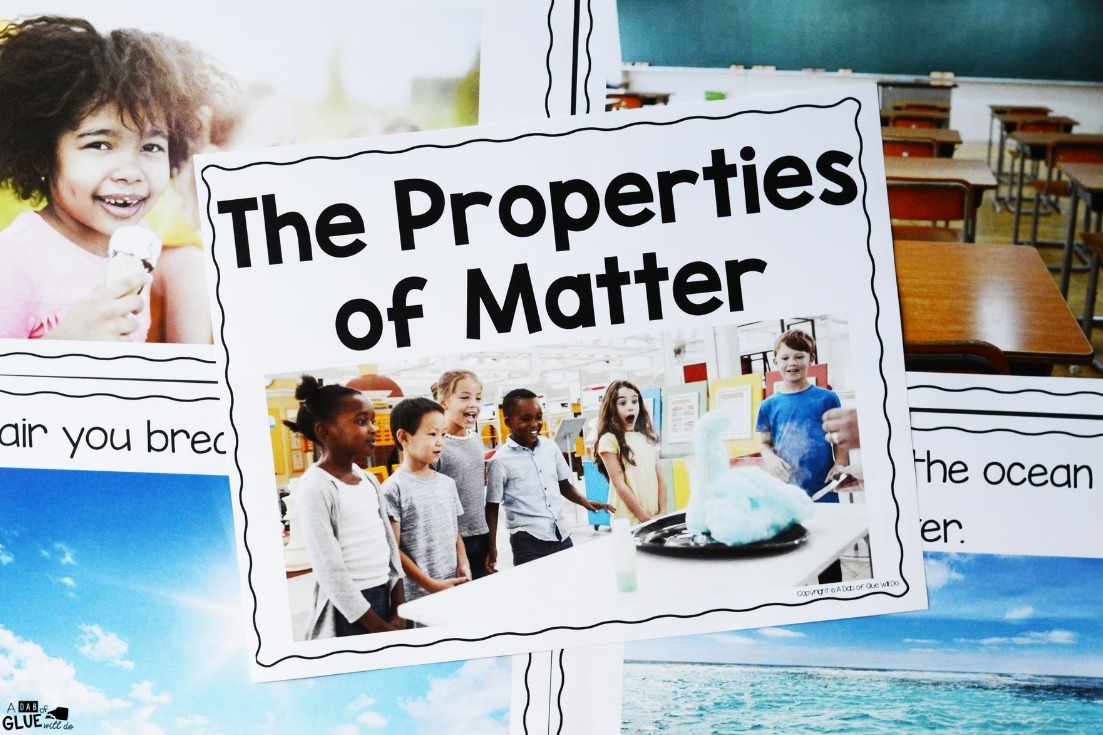
Matter Vocabulary Posters
These posters are perfect for teaching students keywords about matter. It is recommended that you laminate them prior to use for increased durability. You can introduce each vocabulary word and leave them hanging on the wall while the unit is being taught so that students can refer to the posters whenever they would like.
PowerPoint
This is perfect for introducing and reviewing matter with your class. Simply start the PowerPoint and click the mouse to introduce the 10 different properties of matter. Continue this throughout each property until you have finished. You can use the Definition Posters or Definition Cards to help teach the vocabulary when going through the PowerPoint.
Matter Posters
These scientific pictures cover the 10 different properties of matter. Prior to teaching this lesson, place double-sided tape or an adhesive magnetic strip on the back of each picture card. As you introduce the different pieces of matter, place onto or below the correlating picture.
You can use the Definition Posters to help teach the vocabulary when going through the different forms of matter. I recommended you laminate this center so that you are able to use it year after year.
As we hang our pictures around the classroom, it’s fun to read What’s the Matter in Mr. Whiskers’ Room? by Michael Elsohn.
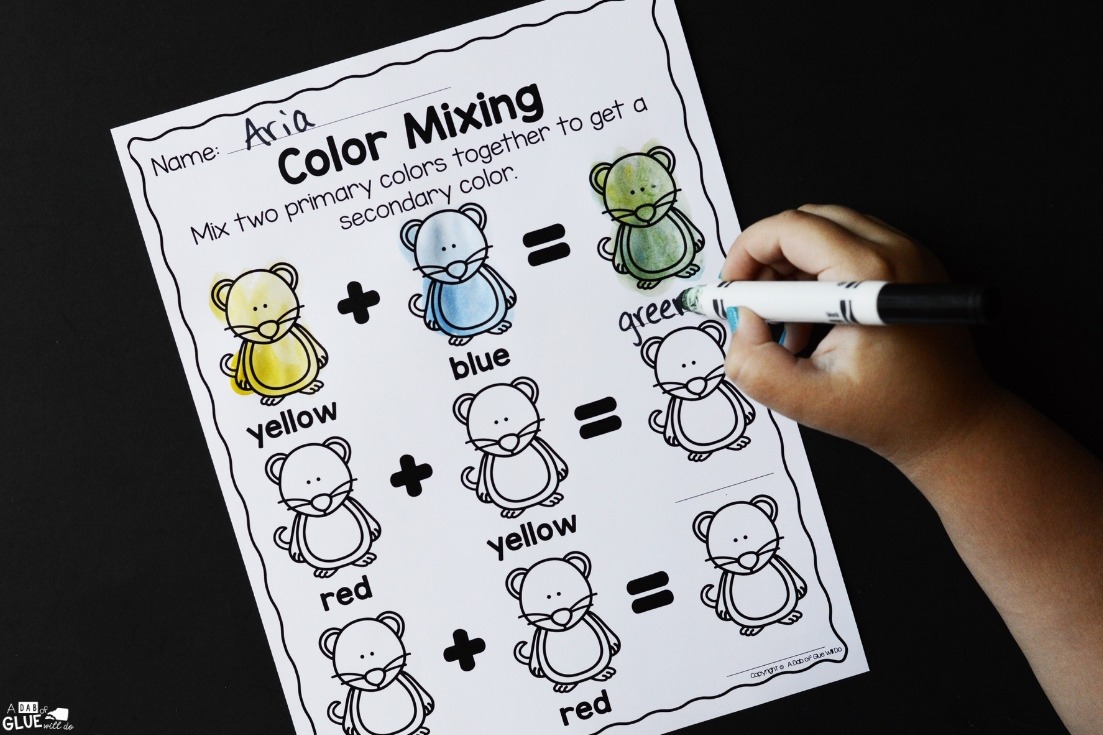
Color Mixing Activity
Connect art with science when your students mix primary colors to make secondary colors. This is a fun way for students to watch the magic of color mixing happen right before their eyes.
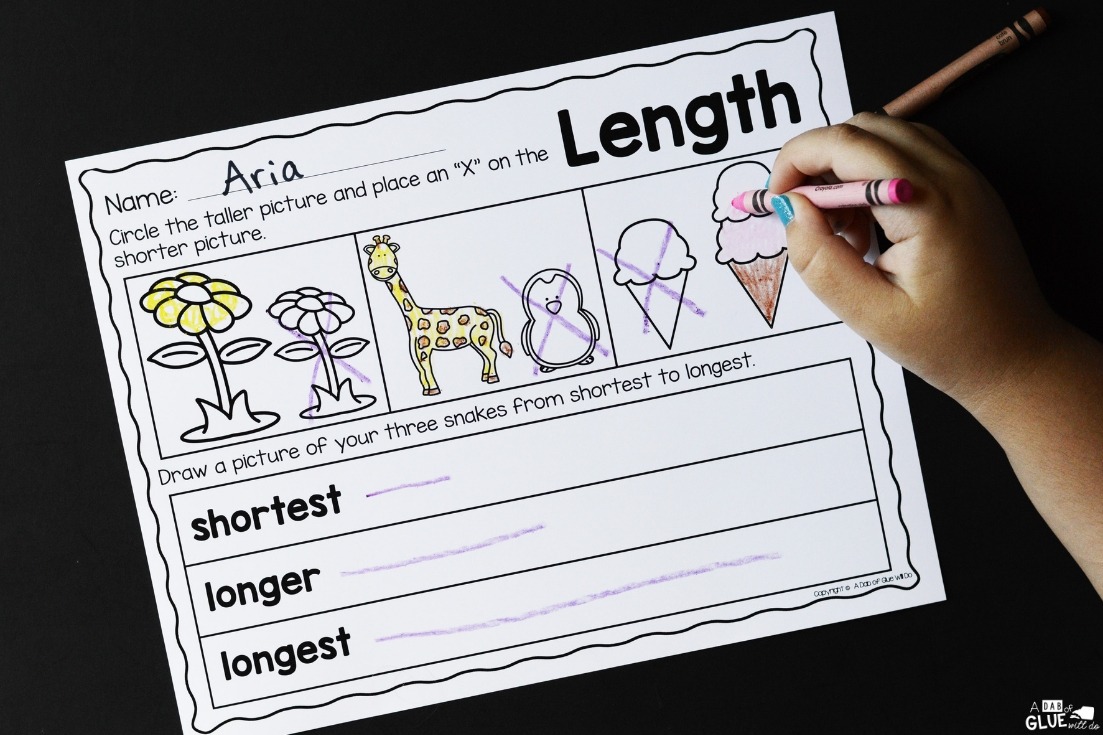
Sorting Lengths Activity
Here students are able to connect math and science when they show what they know by sorting objects by their length and then completing the worksheet.
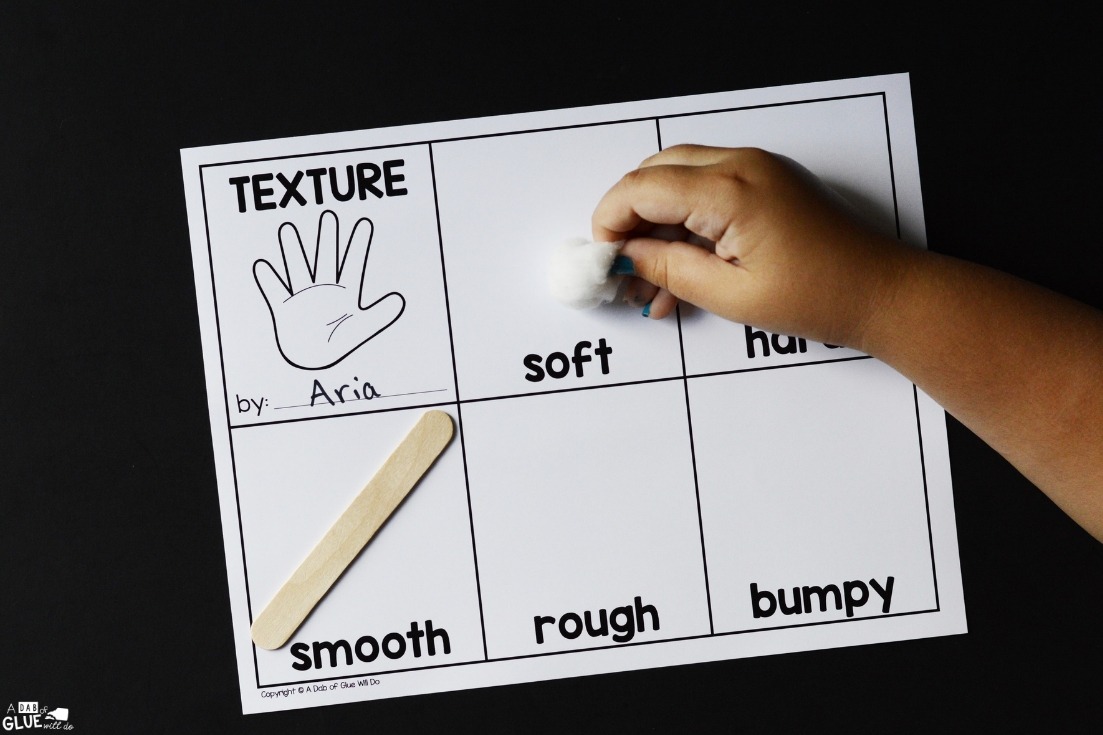
Texture Activity and Mini Book
As students learn to describe matter, they will explore different textures. As they discover the different textures, they will complete their worksheets. This activity comes with three different versions, one with textures labeled, one blank, and one labeled for students to trace. This way, you are able to differentiate for your class.
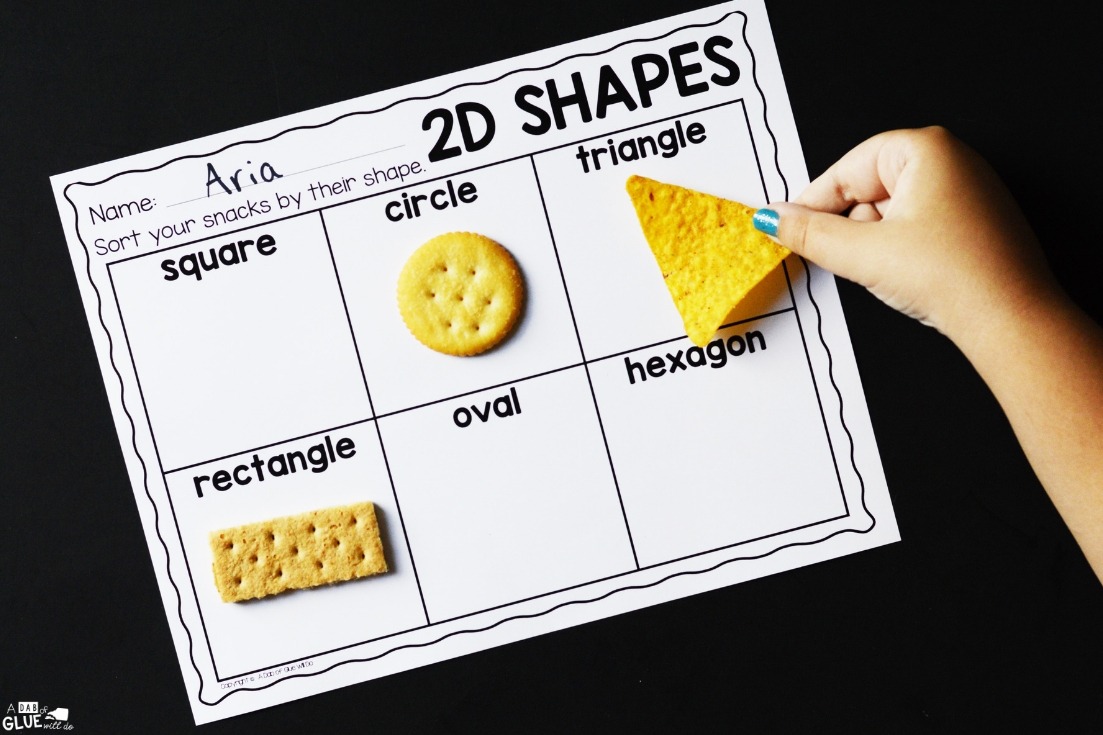
2D and 3D Shapes Snack Activity
Food makes learning even more fun. Using different snacks to complete these 2D and 3D activities. And kids love being able to eat their science project when they are done.
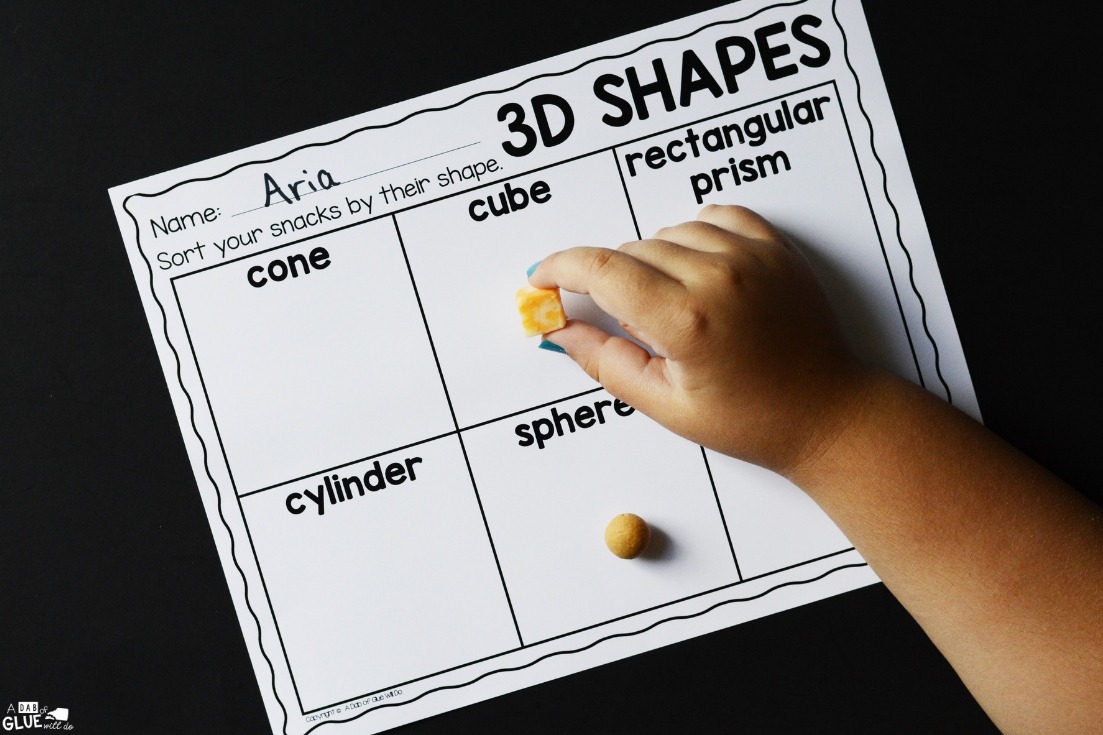
This activity comes with the worksheets to complete the 2D and 3D games along with a list of suggested snacks to use.
We always enjoy reading Matter Comes In All Shapes by Amy S. Hansen while we study 2D and 3D shapes.
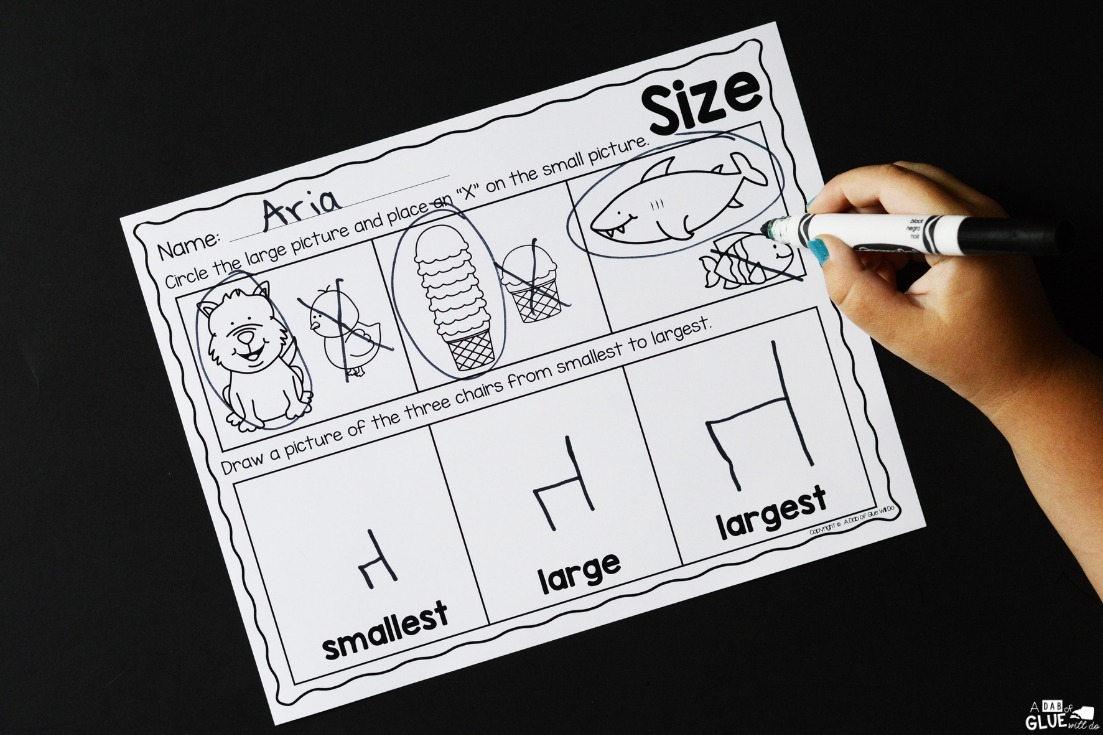
Size Activity
Students get to show off their mastery of size with this interactive learning activity. After our kids are done organizing and putting the different objects in order of size, they are then able to draw out their creations and then complete the size activity worksheet.
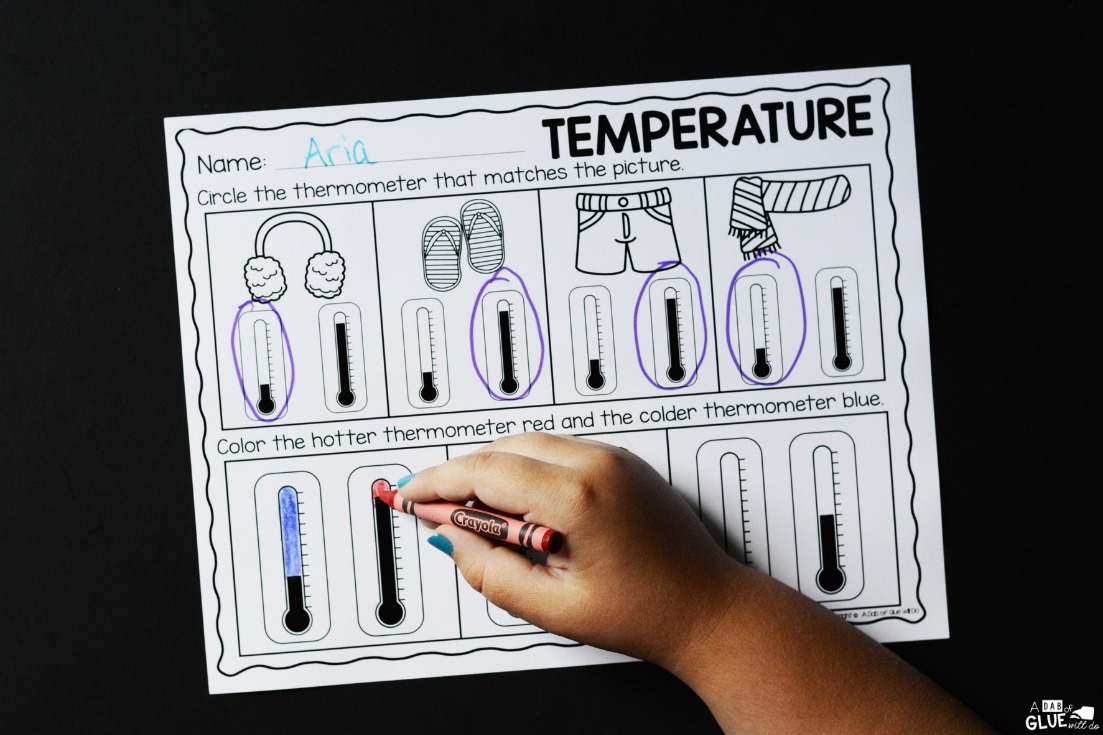
Temperature Activity
The Temperature Lesson is another chance to connect science and math together. With this activity, they will measure, compare, and record different temperatures of liquid.
Students feel like little scientists as they get to use thermometers.
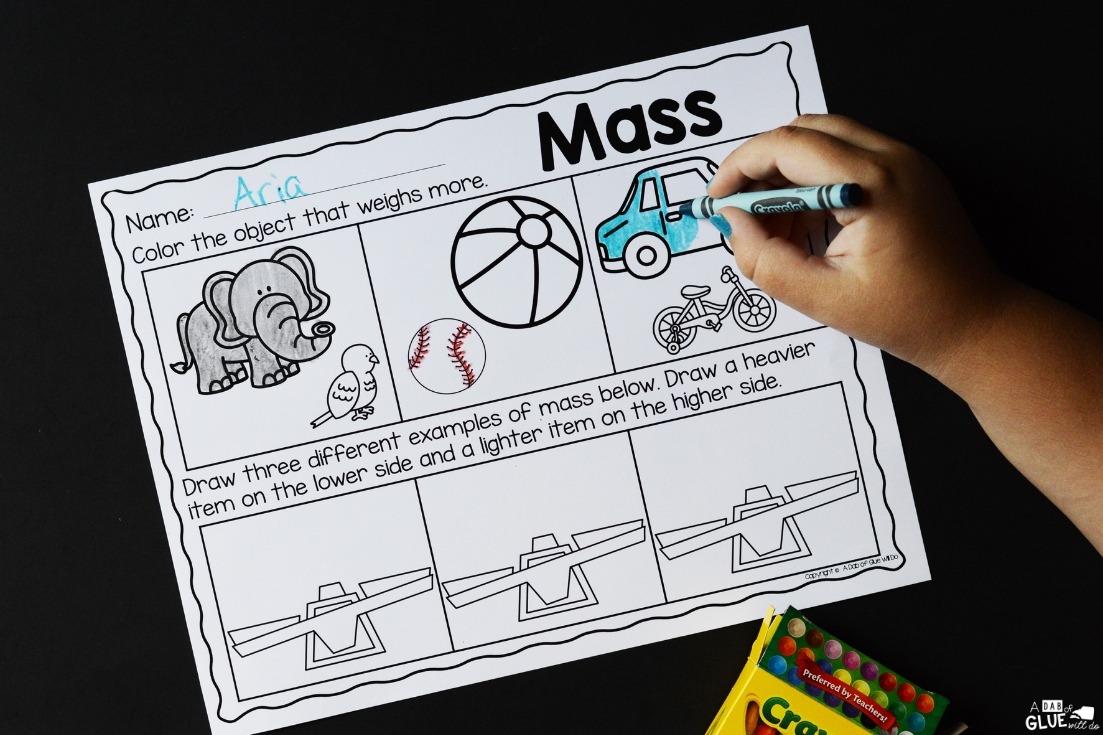
Measuring Mass
Students will get the chance to compare two objects mass while mixing together science and math. They are able to make a hypothesis, observations, and then record their results.
Capacity Activity
With this fun activity, students will be able to discover how many items can fit into a jar. As they complete their experiment, they’ll record their results. This lesson comes with a labeled worksheet and an unlabeled worksheet so you can change up the different objects you may be wanting to fill the jar up with.
Liquid Density Experiment
This is an easy prep experiment that will leave your students fascinated as they see density in action. This experiment comes with instructions, questions to ask your students, the science behind it, and two worksheets for your little learners to complete.
Buoyancy Experiment
Explaining buoyancy is much easier with this hands-on experiment. This experiment comes with instructions, questions to ask your students, the science behind it, and two worksheets for your little learners to complete.
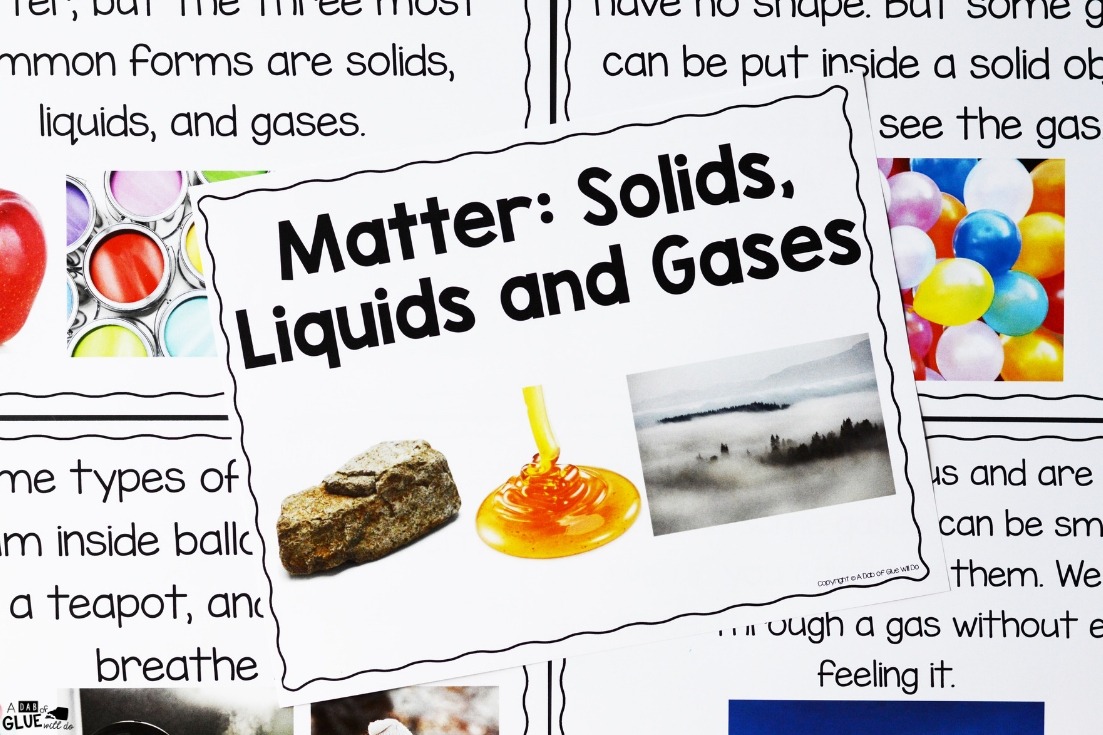
Matter: Solids, Liquids, and Gases PowerPoint and Posters
Students will learn that even though there are many different types of matter, the three most common are solids, liquids, and gasses.
This PowerPoint and accompanying posters are filled with everything you need to teach our littlest learners about these three properties of matter with detailed, scientific, and colorful photographs.
Becoming Molecules Gross Motor Activity
Your students will be mesmerized with this interactive activity. They will see how solids, liquids, and gases have molecules, but each behaves differently.
Cheerios Molecules
With this fun lesson, students will be able to see how solids, liquids, and gases act differently.
When they’ve finished the activity, they will then be able to complete the two worksheets.
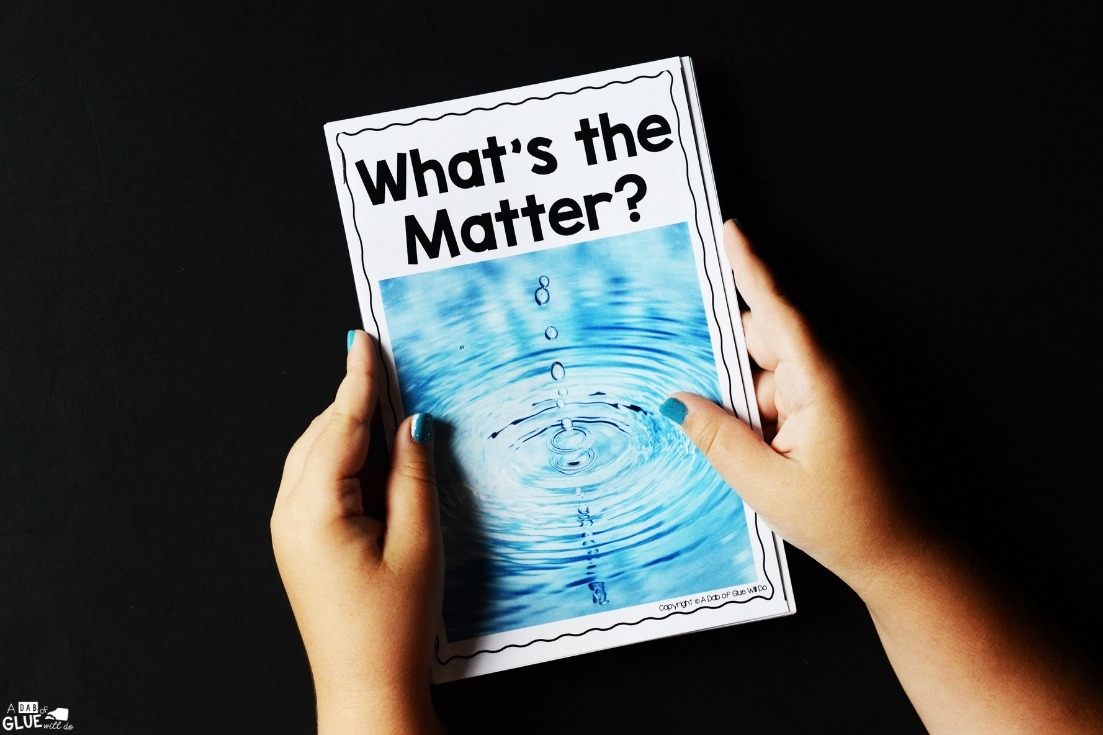
What is Matter? Emergent Reader
This 13-page emergent reader is a great way to connect literacy and science in a fun way. Students enjoy the real pictures and lessons taught throughout the book.
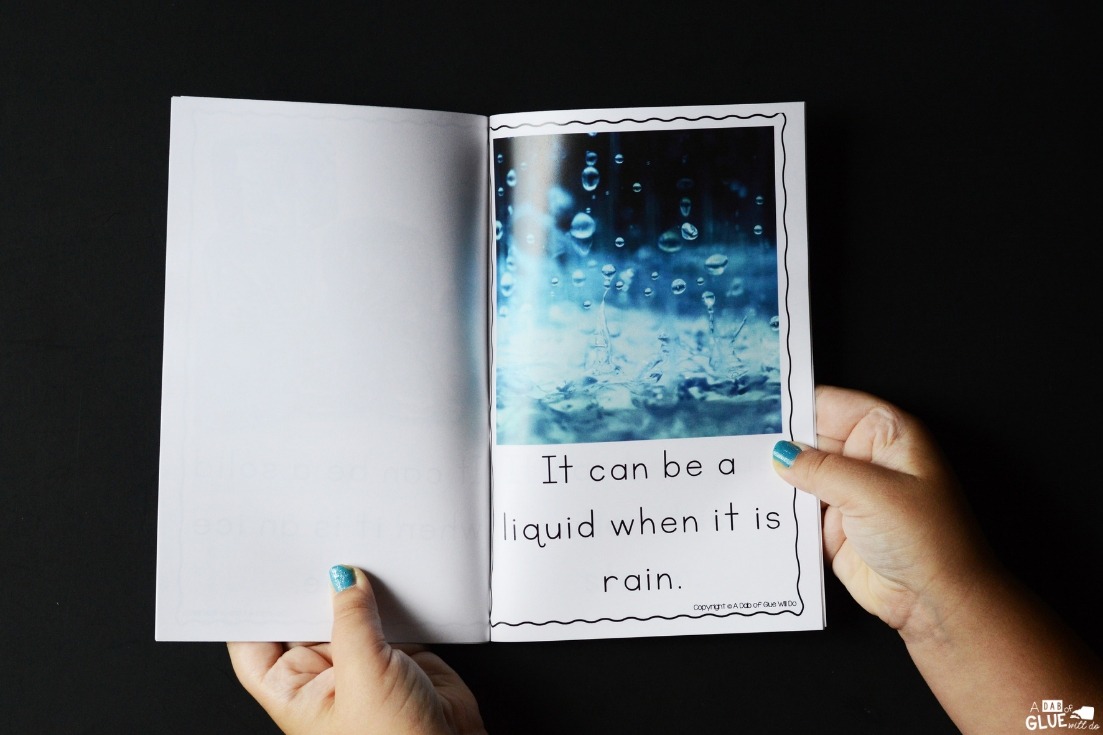
Pancake Matter Experiment
This is a delicious experiment that brings food together while teaching the states of matter. Along with getting a yummy snack, students will be able to show what they’ve learned with the two worksheets. This experiment comes with instructions, questions to ask your students, the science behind it, and two worksheets for your little learners to complete.
Juicy States of Matter Experiment
This super fun experiment gives kids the opportunity to see a liquid turn to a solid and then back to a liquid. This experiment comes with instructions, questions to ask your students, the science behind it, and two worksheets for your little learners to complete.
Balloon Gas Experiment
Matter can be a difficult concept for our littlest learners to understand. This experiment is a great visual for them.
This experiment comes with instructions, questions to ask your students, the science behind it, and two worksheets for your little learners to complete.
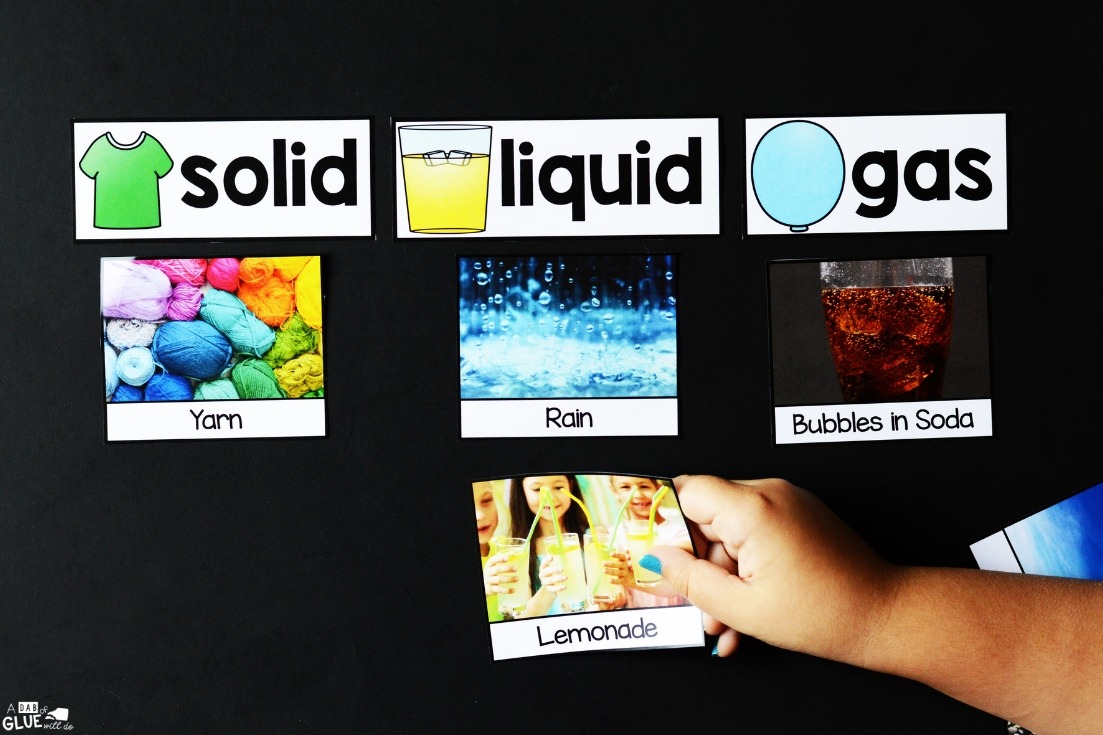
Solid, Liquid, and Gas Sort
I find it best to print this activity out and laminate the pieces before cutting them out. This way, you can use it for years to come.
This Solid, Liquid, and Gas picture sort is the perfect activity for center rotations.
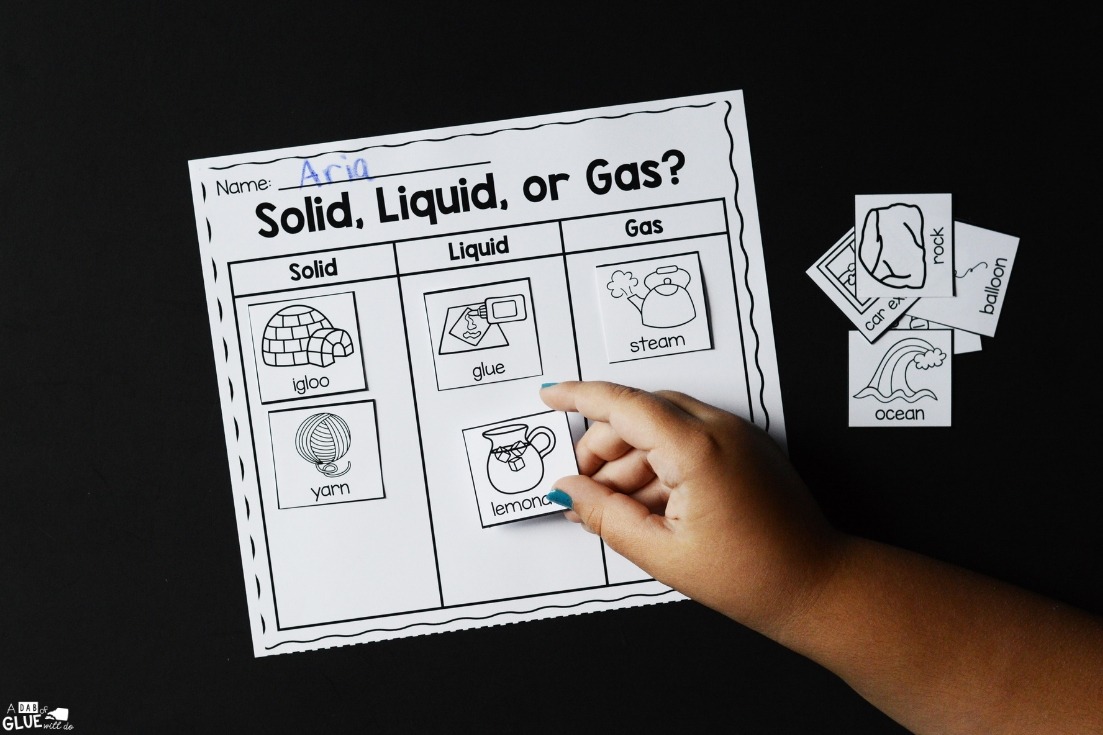
I like to use two-sided tape and place the three states of matter on the board. Students will then place the different pictures under the different forms of matter they think each picture belongs with.
You can have your little learners work in groups or do this game as a class.
Download Matter Science Unit Now:
Are you ready to implement this into your classroom or home?
Purchase at our A Dab of Glue Will Do Store
Purchase on Teachers Pay Teachers
Want More Science Ideas?
If you are looking for more science ideas, activities, and printables, be sure to check out our Endless Science Mega Bundle.

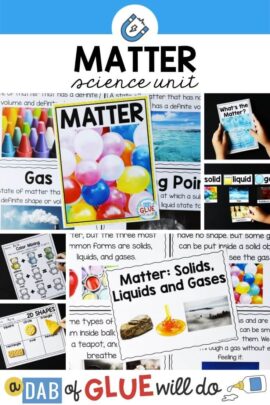
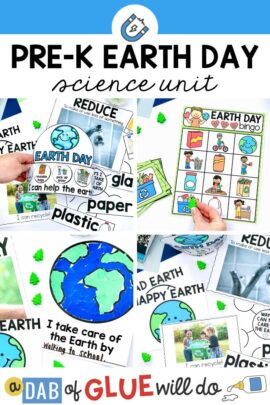
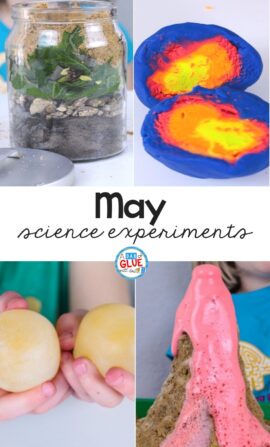
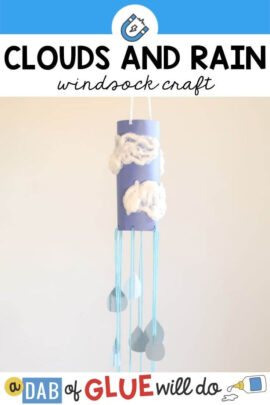
Leave a Comment